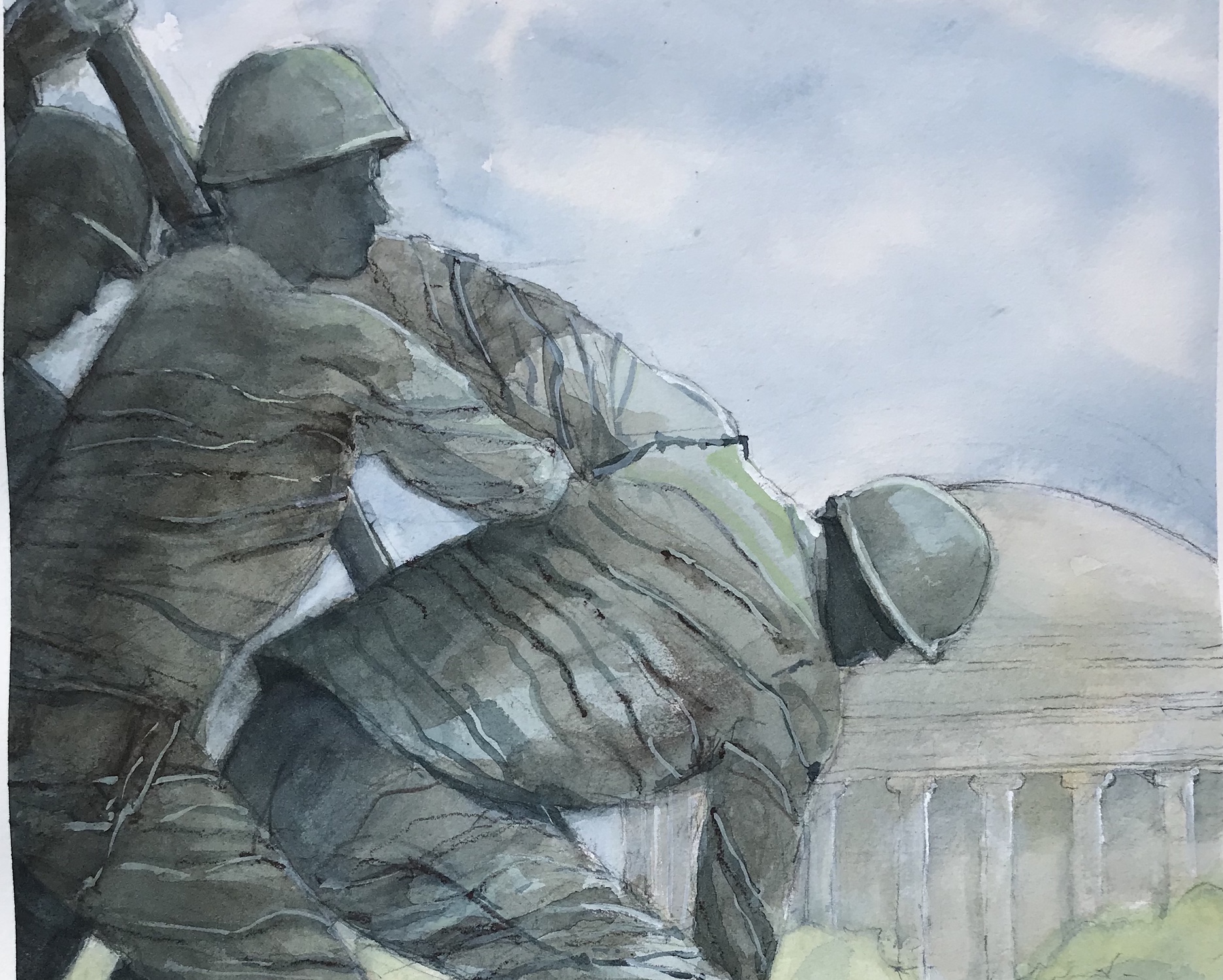Painter and Architect Milton Shinberg revisits, reexamines and re-cognizesthe Washington of his youth through an exhibit of watercolor paintings. Familiar Washington scenes may not always be easy to identify as new vantage points and changing interests have guided his exploration of the Capitol City. Here, there is memory and discovery, old and new—paintings as love notes to an intriguing and engaging metropolis.
From unique vantage points and unexpected perspectives, painter and architect Milton Shinberg invites viewers to rediscover Washington in watercolor, through his limber brushstroke and clear, glassy palette. Contrasting the familiar with the uncharted, Shinberg’s exhibit is a tonic for lifelong Washingtonians and day trippers alike. “re-Cog’-ni’-zing / dc” will be on view at The Art League gallery from December 5 2018—January 6, 2019.
Shinberg captures fragments of Washington in luminous watercolor, lingering on details that captivate the mind of an architect and beguile the hand of an artist. From the gilded dome of Georgetown’s iconic bank, to the half-moon colonnade of the Jefferson memorial, he dwells on moments and memories. Approaching familiar sights from unusual angles, the exhibit focuses on the architecture of Washington—what the artist calls the “connective tissue” of the urban environment.
Shinberg regards The Lincoln Memorial as his signature painting, remarking that it “captures the idea and heart of the show—seeing things in a different way.” Here, the Lincoln Memorial is viewed through the convex lenses of Shinberg’s eyeglasses, its marble facade buckling gracefully to suit the rounded shape of the human retina. Rendered in delicate shades of moss and slate, the painting is a lesson in “re-cognition.”
Shinberg’s exhibit is an ode to his hometown; a city that continues to inspire, invigorate, and engage him. A second generation Washingtonian, Shinberg commented that he “never tires of what makes Washington wonderful.”
Shinberg is an adjunct professor at Catholic University, teaching graduate architecture students the cognitive neuroscience basis of architectural aesthetics. His teachings directly influence his creative work.


